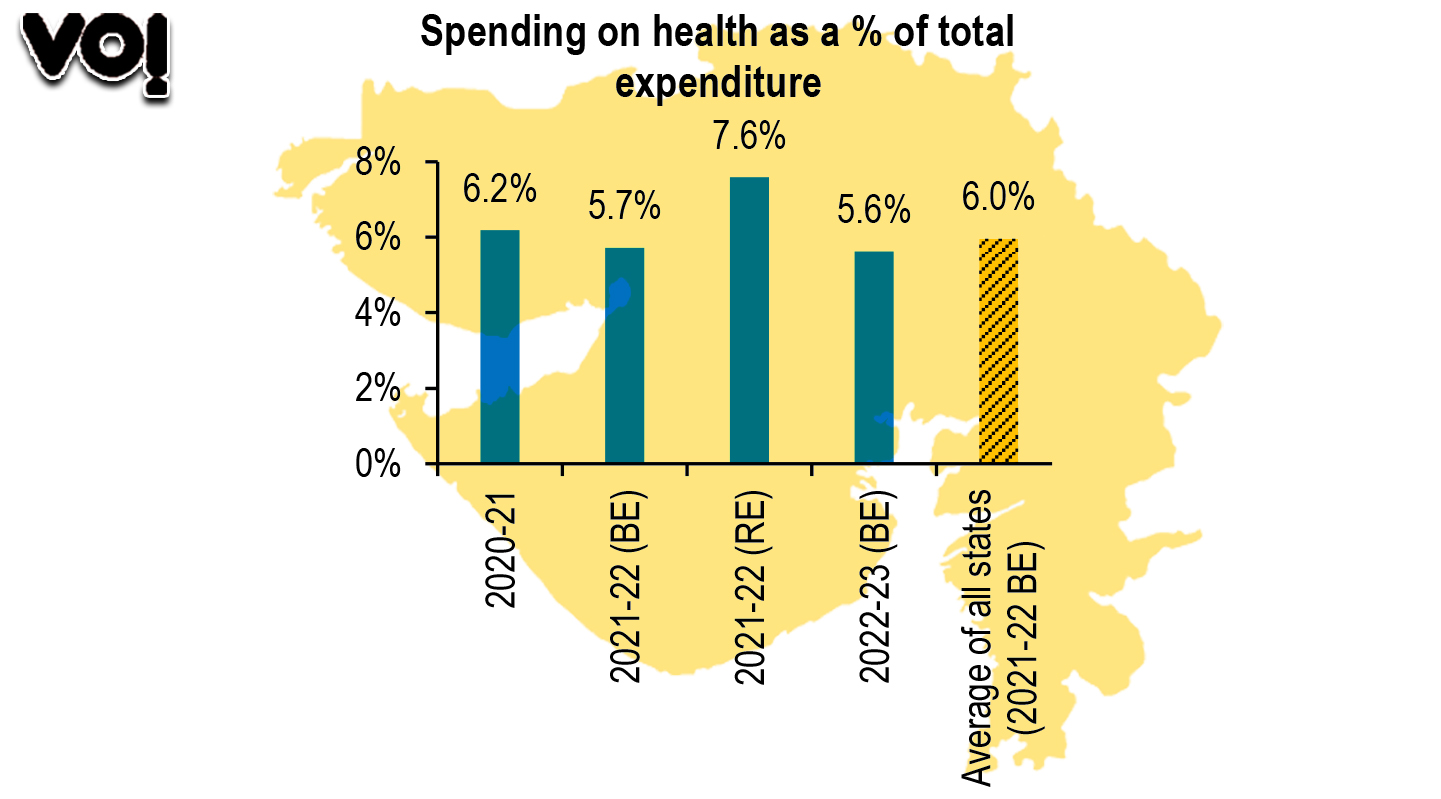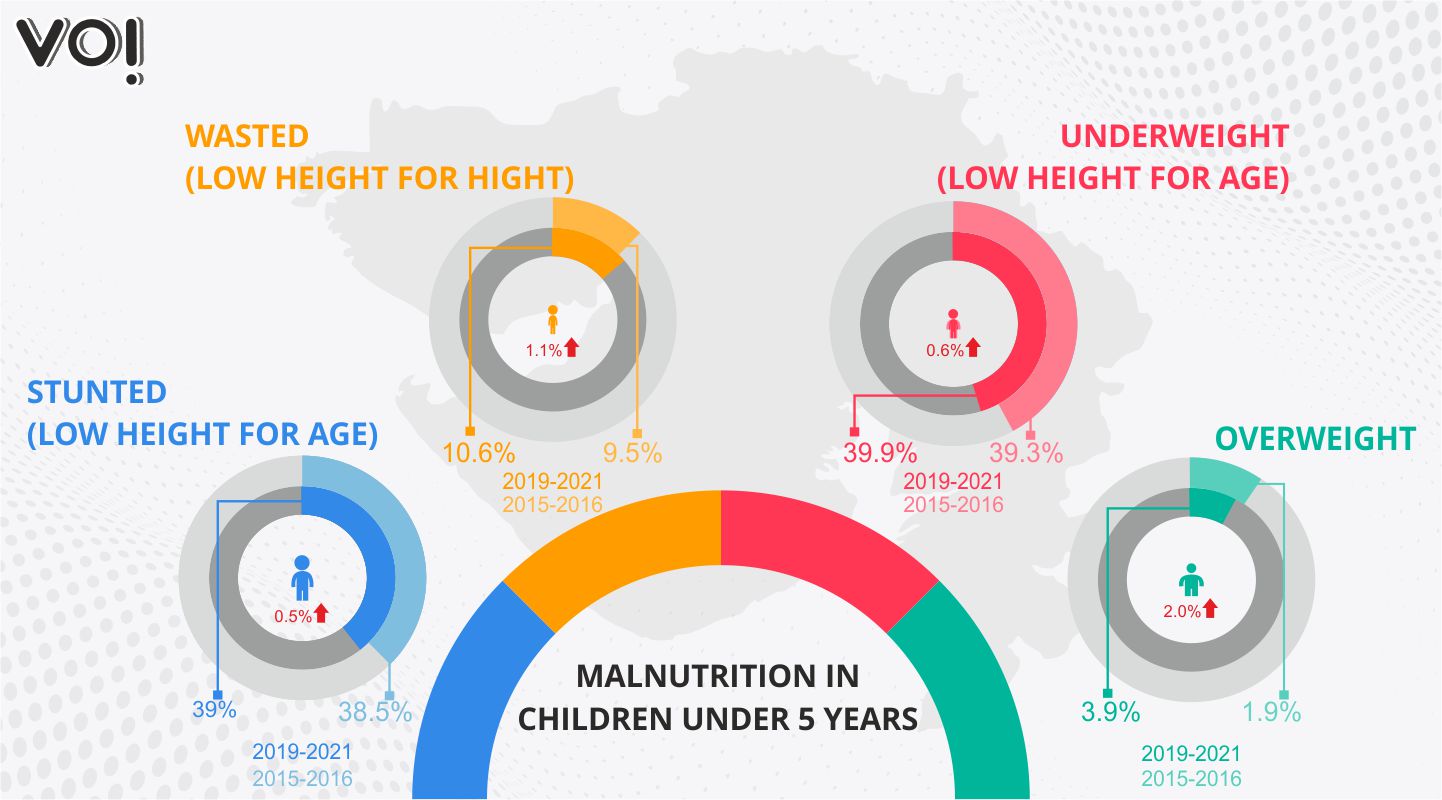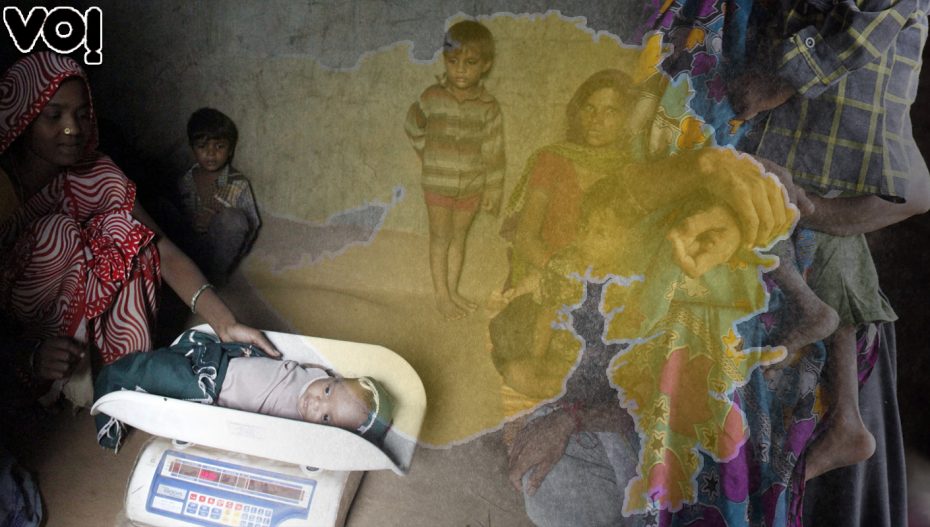Gujarat has allocated only 5.6% of its total expenditure on health, which is lower than the average allocation for health by states (6%) as per the 2022-23 budget estimates. This is a cause of concern as 39% per cent of children in Gujarat under the age of five years are stunted according to National Family Health Survey-5 (2019-21).
These statistics should be a wake-up call for policymakers. Experts are of the opinion that NFHS-5 data indicates that the children in Gujarat have been undernourished for some time. Twenty-five per cent are wasted which may result from inadequate food intake or a recent illness-causing weight loss, and 11 per cent are severely wasted.

According to this survey, malnutrition parameters such as stunting (that refers to low height for age) and wasting (that refers to low weight for age) have shown a spike when compared to the previous edition of the NFHS report from 2015-16. Gujarat is also tagged as one of the poor performing states in the country when it comes to anaemia in children under five years of age.
According to the World Health Organization (WHO), anaemia is an indicator of both poor nutrition and poor health. The WHO defines severe acute malnutrition as very low weight for height, nutritional oedema or a mid-upper arm circumference of fewer than 115 millimetres. The world health body defines moderate acute malnutrition as moderate wasting and/or a mid-upper arm circumference greater than 115 millimetres but less than 125 millimetres.

The NFHS-5 data showed that the rate of malnutrition in India has increased compared to the National Family Health Survey-4, 2015-16.
It is well acknowledged that childhood undernutrition contributes to childhood diseases and is a major cause of child mortality in India. The survey shows that the percentage of children with stunted growth has increased in 13 states.

The Gujarat budget 2022-23 allocated Rs. 12,207 crores for Health and Family Welfare, which is a 16 per cent reduction from the revised budget estimate for 2021-2022. Notably, only Rs. 8,414 crores are allocated for the Social Welfare and Nutrition which is a 13 per cent reduction from the revised budget estimate of the previous year.
“Budgets for nutrition programmes in Gujarat are stagnating”, said Professor Hemant Kumar Shah.
Allocations for Anganwadi services and supplementary nutrition are grossly inadequate and also not even keeping pace with inflation, he added.
“ Gujarat has a basket of food safety programmes such as Mid-day Meal (MDM), Integrated Child Development Services (ICDS) Scheme and Public Distribution System (PDS), still there has been an increase in the percentage of children under the age of five, who are facing undernutrition, overweight and severely wasted, as per the National Family Health Survey-5 (NFHS-5)”, Professor Shah told Vibes of India.
Shah drew attention to how the Union government last year consolidated several programmes for children, adolescent girls, supplementary nutrition and POSHAN (Prime Minister’s Overarching Scheme for Holistic Nourishment) into an umbrella programme called Saksham Anganwadi and POSHAN 2.0. Despite this, there is confusion over the objectives and implementation of the new programme, and the government continues to underspend on nutrition.
The unmet need for nutrition among children in some other states is no less alarming.
Women and Child Development ministry estimates that there are 17,76,902 (17.76 lakh/1.7 million) severely acute malnourished children (SAM) and 15,46,420 (15.46 lakh/1.5 million) moderately acute malnourished (MAM) children as of October 14, 2021.
Gujarat registered the third highest number of such children at 3,20,465 (3.20 lakh) with 1,55,101(1.55 lakh) MAM children and 1,65,364 (1.65 lakh) SAM children.
Maharashtra registered the highest number of malnourished children at 6.16 lakh with 1.57 lakh MAM children and 4.58 lakh SAM children. Bihar ranks second on the list with 4.75 lakh malnourished children.
A young community health worker who visits various slum areas around Ahmedabad, told VOI, ” Children are facing chronic and acute malnutrition and stunting due to the poor education of parents, low birth weight, higher birth order and poor economic condition”.
Take the case of Kalisha (name changed), a five-year-old child who lives near the Ellisbridge slum in Ahmedabad. Kalisha is anaemic and malnourished. Her 25-year-old mother’s condition is much the same.
In 2019-20, the Department of Community Medicine, B. J. Medical College, Ahmedabad, researched the prevalence of underweight, stunting and wasting among children of 6 months to 5 years as per the World Health Organization (WHO) growth chart.
Out of the total 165 involved children in the study, 29.69% of children were underweight (low weight for age) and 15.75% were severely underweight. It showed that the prevalence of underweight (acute malnutrition) was 45.44%. The prevalence of stunting (low height for age) and severe stunting was 20% and 26.06% which reflected the problem of chronic malnutrition.
Also, wasting (low weight-for-height) was found in 15.75% of children and a proportion of severe wasting was 14%.
Speaking to VOI, Women and Child Development Secretary K.K. Nirala said that the government has taken up various initiatives. “ We are now enhancing the existing schemes and programmes through community-based service-delivery platforms and ensuring everyone is getting access to these. In order to improve malnutrition among children in the age group 0-6 years, we have given more focus on the first 1000 days of the child’s life through multi-sectoral and community-based approaches.’’
A paediatrician from B.J Medical College told VOI that there is a need to strengthen the promotion of maternal nutrition. Maternal education and improving household socio-economic conditions along with health care services may improve the nutritional status of children. “It is important to focus on malnutrition because a weak child today will make a weak nation tomorrow”, he added.
India has slipped to the 101st position in the Global Hunger Index (GHI) 2021 of 116 countries, from its 2020 position of 94th and is behind its neighbours Pakistan, Bangladesh and Nepal.
National Health Mission Director Remya Mohan Muthadath told our team that the Gujarat government has implemented several initiatives in recent years to overcome the problem of malnutrition. “We have realized the urgency to mitigate the problem of malnutrition through an integrated inter-sectorial holistic approach. In order to improve the current status of nutrition, we have evolved a preventive and curative strategy. Facility-based management of Severe Acute Malnourished (SAM) children has been started in CMTCs (Child Malnutrition Centres) and NRCs (Nutrition Rehabilitation Centres) across the state.
The pandemic has increased vulnerability to malnutrition. Imperative action should be taken to look into the nutrition of children who are our future.
Photo Credits: Hanif Sindhi


















Some business houses may be pleased to take up this worthwhile cause as part of their CSR initiatives.